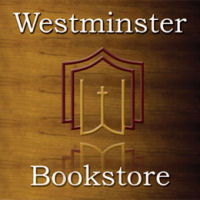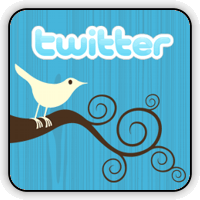
C. Marvin Pate's The Writings of John is an introductory book addressing the Johannine corpus. It covers the Gospel of John, the three Johannine Epistles, as well as the book of Revelation. While the book is intended to be used as a textbook in introductory New Testament classes, it is just as acceptable for personal reading and study. Each chapter is relatively short, and you can tell that Pate put a great deal of effort into ensuring that the book isn't bogged down by technical details while at the same time taking care to cover the relevant and necessary information that any introduction to the writings of John ought to at least touch upon.
In the introduction to each of the Johannine books, Pate spends an adequate amount of time discussing issues of authorship, dating, textual transmission, historical context, as well as theological context. For example, in his introduction to the Gospel, he discusses the Hellenistic religious environment as well as the various theological pressures from Judaism and establishes briefly but effectively that the book was not written in a theo-social vacuum.
I should mention as an aside that Pate does his best to steer clear of theological debates regarding issues such as predestination. In his introduction to the Gospel of John, instead of taking a position on what he calls "eternal security," he simply lists some verses used by each side in defense of their particular view. A safe move no doubt intended to keep a wide readership.
Along the way, he provides quotes from historians such as Josephus in the side-columns which relate to the historical context. These extended quotes are quite appropriate and serve in most cases to reinforce the historical realities being dealt with. Also, I should note that the entire book is full color, and almost every page has colorful images of Palestine and artifacts conceivably related to the story. As an example, the chapter on the wedding at Cana includes photos of large jars used by ancient Jews as well as photographs of the modern Cana region, to give an example of the way the book uses images. For my own part, I enjoyed the photographs since they lent a sense of atmosphere to the readings.
At the end of each chapter, Pate offers a handful of review questions as well as between a half dozen and several dozen key terms which were touched on in the chapter. I can't help but think that this would be very helpful in a teaching context, and it is the strongest indicator that this book is meant to be used in the classroom.
After the introductory chapter for each book, the remainder follows a commentary structure grouping the chapters thematically around a particular section of John's writings. For example, chapter 4 of The Writings of John covers "The Miracle at Cana and the Cleansing of the Temple; John 2."
Although it wouldn't be mistaken to suggest that Pate's chapters constitute a commentary, it does seem that Pate is more interested in giving a thematic overview of each of the books. Again, there is a commentary here, but it very brief and probably is only helpful for getting a basic grasp of the text. You won't be throwing away your New International Commentary on John anytime soon.
My biggest complaint about Pate's project is that it seems to be dodging predestinarian elements in John's writings. For example, when he discusses John 6:44, he has the crowd being offended strictly because it was offensive that Jesus equated Himself with the bread from heaven. No doubt, this assertion was offensive. However, he skips over verses 44-48, where Jesus says that no one can come to Him without being drawn by the Father - if I might, a classic Calvinist prooftext. No mention from Pate. Again, a safe move likely to endear him to a more Arminian readership and also unlikely to highly offend more Calvinistically minded readers.
Pate's tendency to just skip over verses which hold no interest for him - for one reason or another - is why I would again emphasize that this is not really a commentary so much as an overview.
Another negative feature, depending on what you're looking for in a book on the subject of John's writings, is that at times he tends to refuse to take sides in scholastic debates. As an example of this, on page 68, he is discussing the Temple Cleansing of Jesus. He addresses the fact that many believe there were two temple cleansings, with one at the beginning of Jesus' ministry in John 2 and one near the end of Jesus' ministry (Mark 11:15-18; Matt. 21:12-16; Luke 19:45-47). My problem with the way Pate addresses this issue is that he states the three views of this issue, but never weighs their merits or demerits. While he does point us to Kostenberger's conservative commentary on John, Pate doesn't get any further into the discussion than simply listing the three perspectives that exist on the number of temple cleansings.
To some this may be a plus. I could see where many would enjoy the somewhat noncommital nature of Pate's approach - especially as a text book. In my opinion, however, a student who is learning about these issues would be greatly helped by seeing how one arrives at a conclusion in difficult discussions like these.
This is not always Pate's approach in every situation. For example, in chapter 45, where he deals with the question of the 144,000 in Revelation, he spends an impressive amount of space dealing with the question of whether the 144,000 in 7:4 is the same as the numberless multitude in 7:9. In this case, he comes right out and says, "For several reasons, I am convinced that Revelation 7:1-8 is not to be equated with Revelation 7:9-17," and then he offers seven convincing reasons in favor of his take on things. I personally enjoy when the author puts his views out there like this. Even if I disagree with the author, I can appreciate where he is coming from.
Overall, Pate's treatment of the writings of John is solid. It does what it is meant to do. It is a good undergraduate textbook, and I would not shy from recommending it to someone who is looking for a very broad, theologically noncommital overview of the writings of John. I appreciate that Pate holds conservative understandings of the authorship and dating of the books. To my mind, this is important, and a big plus. Depending on your needs, this may be just the book for you. If you want a more opinionated take on things, you may find Andreas Kostenberger's A Theology of John's Gospel and Letters to be a bit more to your liking.
You can purchase The Writings of John through one our Associate links at Amazon by clicking here.



No comments:
Post a Comment
Before posting please read our Comment Policy here.
Think hard about this: the world is watching!